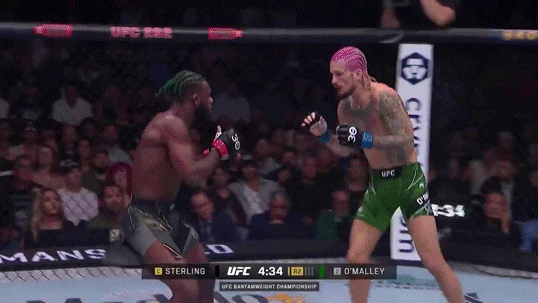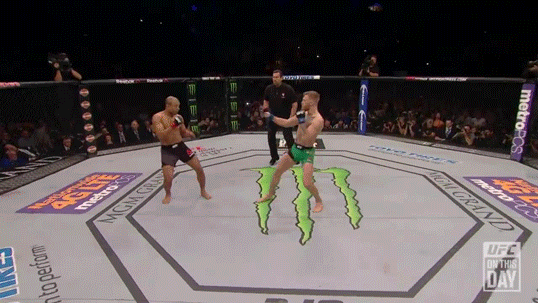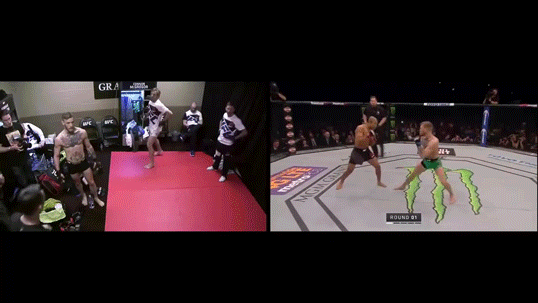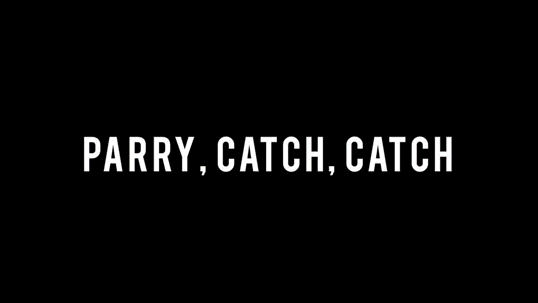I was happy that this was one of the days the BGM wasn't loud. During the day we can get the staff to turn it down, but at night, it can be too loud to workout in the bag room.I thought you 2 guys fought on top of the mountain during sunrise with heavy BGM.
Navigation
Install the app
How to install the app on iOS
Follow along with the video below to see how to install our site as a web app on your home screen.
Note: This feature may not be available in some browsers.
More options
Style variation
You are using an out of date browser. It may not display this or other websites correctly.
You should upgrade or use an alternative browser.
You should upgrade or use an alternative browser.
Did a little training with Tony Dismukes
- Thread starter JowGaWolf
- Start date
My wife was also reminding me that we still had a 6 & 1/2 hour drive left to get home.I got a warning from my wife. There's only so much martial art conversation that she'll let me get away with. She was working out that day as well in the same gym.
Do you believe this may have worked? Similar to KFW's move, in Aljamain Sterling (grappler) vs Sean O'Malley (striker)...To give a bit more context to how JWG used the jump during our practice:
I had caught him off guard and entered into a closer range than he wanted to play with me. If he had just stepped back normally, he wouldn't have been able to retreat quickly enough before I executed my technique. So he framed off of my body and jumped, meaning that as I moved forward I was pushing him back through the air and allowing him to get the distance he needed to escape.
1. Sean (with pink hair) leads Aljamain by moving laterally.
2. Sean feints, controls Aljamain's lead hand, kicks (push) and steps back (pull) to draw Aljamain's counter pressure and reaching..
3. Aljamain tries to grab Sean's lead wrist and throw a straight left.
4. Sean moves laterally and throws a right hand knocking down Aljamain.

Tony and I talked about this scenario when when I was showing how and where Jow Ga delivers the hook punch. In Jow Ga forms the hook is a linear movement and I was telling him that was incorrect for application. That linear movement would cause the the Jow Ga student to heat that rear hand. We also talk about about the importance with dealing with the opponent's lead hand.. This clip is a perfect example of those same errors . Black shorts fails to deal with the opponent's lead hand and decides to take a linear entrance which is the type of mistake you want to make in training and not in competition. Spar to learn.Do you believe this may have worked? Similar to KFW's move, in Aljamain Sterling (grappler) vs Sean O'Malley (striker)...
1. Sean (with pink hair) leads Aljamain by moving laterally.
2. Sean feints, controls Aljamain's lead hand, kicks (push) and steps back (pull) to draw Aljamain's counter pressure and reaching..
3. Aljamain tries to grab Sean's lead wrist and throw a straight left.
4. Sean moves laterally and throws a right hand knocking down Aljamain.

I have my own thought about your original question about the jump. But I want to hear what Tony has to say since he was on the "receiving end" of that jump.
Wing Woo Gar
Grandmaster
Aw jeez it’s the same everywhere huh? Me and Jess have the same issues. Patriarchy my ***, I’ve never been in charge or advantaged over any female in my life. My Sifu told me two pieces of marital advice; don’t eff this up, and the only correct answer is yes ma’am.My wife was also reminding me that we still had a 6 & 1/2 hour drive left to get home.
I like this sort of counter, teach it, and have used it. But it would not have been appropriate for the moment when JGW used the jumping retreat in our sparring*. At that moment I had already gotten a much deeper entrance (so our bodies were only about a foot apart) and I was covering most of his good striking lines. Since I was already moving forward and had caught him almost stationary, if he had tried just stepping back to make room for a strike, I would have gotten the clinch before he could get the space he wanted.Do you believe this may have worked? Similar to KFW's move, in Aljamain Sterling (grappler) vs Sean O'Malley (striker)...
1. Sean (with pink hair) leads Aljamain by moving laterally.
2. Sean feints, controls Aljamain's lead hand, kicks (push) and steps back (pull) to draw Aljamain's counter pressure and reaching..
3. Aljamain tries to grab Sean's lead wrist and throw a straight left.
4. Sean moves laterally and throws a right hand knocking down Aljamain.

He did get his arms up as a frame between us and could have tried just rooting his stance and holding me at distance with his frames, but that risked me flowing around his frames or using them as handles to manipulate them. So instead he jumped up and back and allowed my momentum to help push him back and create more distance while still staying on balance.
*(I say "sparring", but it was really more slow, low-intensity, flowing to explore ideas and positions. In BJJ we'd call it flow-rolling. Technically it's a form of sparring, but we weren't trying to be competitive at all.)
Thanks. Yes, I wasn't suggesting JGW should have done any different in yours context.I like this sort of counter, teach it, and have used it. But it would not have been appropriate for the moment when JGW used the jumping retreat in our sparring*. At that moment I had already gotten a much deeper entrance (so our bodies were only about a foot apart) and I was covering most of his good striking lines. Since I was already moving forward and had caught him almost stationary, if he had tried just stepping back to make room for a strike, I would have gotten the clinch before he could get the space he wanted.
He did get his arms up as a frame between us and could have tried just rooting his stance and holding me at distance with his frames, but that risked me flowing around his frames or using them as handles to manipulate them. So instead he jumped up and back and allowed my momentum to help push him back and create more distance while still staying on balance.
*(I say "sparring", but it was really more slow, low-intensity, flowing to explore ideas and positions. In BJJ we'd call it flow-rolling. Technically it's a form of sparring, but we weren't trying to be competitive at all.)
In Conor McGregor vs Jose Aldo, Conor uses the same concept as Sean: control the space (e.g., kick), maintain distance, push/pull, lure Jose to commit, then adhere and follow with counter.

Backroom locker footage of Conor McGregor only hours before his bout with Jose Aldo practicing the straight left hand he would later go on to use and get the finish over Jose Aldo at UFC 194 put side by side with the actual finish in the fight.

(
@marvin8
There are 2 main things going on here.
1. The shuffle steps.
2. The issue of not dealing with the lead hand.
That shuffle step and the jump backwards are 2 different concepts. The jump was purely escape. That shuffle step that you see Connor doing has offense and defensive options that I didn't have when I jump backwards.
Backward movement of that shuffle step is often used to draw the opponent in. The jump that I did was to escape Tony's forward advancement. In Jow Ga I would use that shuffle step to keep distance from your attacks. if you are like most people then you will think there is an advantage to attacking and controlling the fight. This is where the mistake lies. The shuffle back can passively control the fight by creating impatience in an opponent who is trying to press the offensive. That move backwards gives the false assumption that the offense press is working and as a result they overextend, and over commit.
The only reason the KO happened was because he failed to control that lead hand. Then he made it worse by going up the center. Controlling that lead hand and moving to the outside of it will protect you from eating that cross.
@Tony Dismukes In terms of footwork, this seems closer to the shuffle step that we did near the beginning of the training where I said the steps are short and the goal is to get far away from the punch, but to get just out of range of the punch. That footwork is different than the jump that backwards jump that I did.Thanks. Yes, I wasn't suggesting JGW should have done any different in yours context.
In Conor McGregor vs Jose Aldo, Conor uses the same concept as Sean: control the space (e.g., kick), maintain distance, push/pull, lure Jose to commit, then adhere and follow with counter.

Backroom locker footage of Conor McGregor only hours before his bout with Jose Aldo practicing the straight left hand he would later go on to use and get the finish over Jose Aldo at UFC 194 put side by side with the actual finish in the fight.

@marvin8
There are 2 main things going on here.
1. The shuffle steps.
2. The issue of not dealing with the lead hand.
That shuffle step and the jump backwards are 2 different concepts. The jump was purely escape. That shuffle step that you see Connor doing has offense and defensive options that I didn't have when I jump backwards.
Backward movement of that shuffle step is often used to draw the opponent in. The jump that I did was to escape Tony's forward advancement. In Jow Ga I would use that shuffle step to keep distance from your attacks. if you are like most people then you will think there is an advantage to attacking and controlling the fight. This is where the mistake lies. The shuffle back can passively control the fight by creating impatience in an opponent who is trying to press the offensive. That move backwards gives the false assumption that the offense press is working and as a result they overextend, and over commit.
The only reason the KO happened was because he failed to control that lead hand. Then he made it worse by going up the center. Controlling that lead hand and moving to the outside of it will protect you from eating that cross.
Controlling the leading arm, move to the inside, comb hair the other arm, and followed with a head lock is a perfect way to switch a striking game into a wrestling game.Controlling that lead hand and moving to the outside of it will protect you from eating that cross.
Before your opponent punches you with cross, you use "comb hair" to jam his back arm.
Last edited:
I once trained with a woman who got mad at me for not taking sparring serious because I would stick my arm out and leave my hand on her head. She thought I wasn't taking her seriously. The coach said , "He's telling you to do take deal with that lead arm." I was hoping she would understand the same thing, but she didn't. I could have just one inch punched her all day. But It thought it would be more important to figure the danger whichControlling the leading arm, move to the inside, comb hair the other arm, and followed with a head lock is a perfect way to switch a striking game into a wrestling game.
Before your opponent punches you with cross, you use "comb hair" to jam his back arm.
Lots of bad things can and will happen if that lead hand is ignored. It' a simple concept that even professional fighters miss.
Few MA systems use long guard and I don't know why.I would stick my arm out and leave my hand on her head.
Boxing guard is used to protect your head. But if you put your arms Infront of your opponent's face, you are also protecting your head. Your opponent's punch has to deal with your arms first before reaching to your head.
If you use "separate hands" by putting your arms between your opponent's head and his arms, none of his arms can hit you.
Last edited:
Action/reaction, make two steps into one with the shuffle step to get an advantage (e.g., bridge the gap, power).@Tony Dismukes In terms of footwork, this seems closer to the shuffle step that we did near the beginning of the training where I said the steps are short and the goal is to get far away from the punch, but to get just out of range of the punch. That footwork is different than the jump that backwards jump that I did.
Yes. The jump can be for emergencies, if one fails to control lines of attack (e.g., the hands), the space or the distance.@marvin8
There are 2 main things going on here.
1. The shuffle steps.
2. The issue of not dealing with the lead hand.
That shuffle step and the jump backwards are 2 different concepts. The jump was purely escape. That shuffle step that you see Connor doing has offense and defensive options that I didn't have when I jump backwards.
Yes, that's the concept. However, you can use normal steps to lead the opponent by making them think they can get you. Then, move out of that position with the shuffle step and time an attack. The important principle is lead your opponent (set a trap), don't let them lead you.Backward movement of that shuffle step is often used to draw the opponent in. The jump that I did was to escape Tony's forward advancement. In Jow Ga I would use that shuffle step to keep distance from your attacks. if you are like most people then you will think there is an advantage to attacking and controlling the fight. This is where the mistake lies. The shuffle back can passively control the fight by creating impatience in an opponent who is trying to press the offensive. That move backwards gives the false assumption that the offense press is working and as a result they overextend, and over commit.
Aljamain missed grabbing the kick, then momentarily controlled the lead hand by grabbing the lead wrist. However, he failed to control the opponent. Also, Aljamain entered the punching range overextended.The only reason the KO happened was because he failed to control that lead hand. Then he made it worse by going up the center. Controlling that lead hand and moving to the outside of it will protect you from eating that cross.
Also, controlling the front hand (with or without contact) closes that line of attack which may lead the opponent to open up with the rear hand creating an opportunity to attack.I once trained with a woman who got mad at me for not taking sparring serious because I would stick my arm out and leave my hand on her head. She thought I wasn't taking her seriously. The coach said , "He's telling you to do take deal with that lead arm." I was hoping she would understand the same thing, but she didn't. I could have just one inch punched her all day. But It thought it would be more important to figure the danger which lots of bad things can and will happen if that lead hand is ignored. It' a simple concept that even professional fighters miss.
Wing Woo Gar
Grandmaster
Please show “comb hair”Controlling the leading arm, move to the inside, comb hair the other arm, and followed with a head lock is a perfect way to switch a striking game into a wrestling game.
Before your opponent punches you with cross, you use "comb hair" to jam his back arm.
4 moves are showing here:Please show “comb hair”
1. left arm - downward parry.
2. right arm - comb hair.
3. left arm - arm wrap.
4. right arm - head lock.
It looked like he didn't control it at all which is why that rear punch was able to come in. That rear punch would have been either interrupted, degraded, or prevented if that lead hand was controlled.Aljamain missed grabbing the kick, then momentarily controlled the lead hand by grabbing the lead wrist. However, he failed to control the opponent. Also, Aljamain entered the punching range overextended
Instead in first clip the lead hand remain serving as long guard and range finder. In the second clip the Conor used his lead hand to defend against his opponent's lead hand and rear hand punch.
Wing Woo Gar
Grandmaster
Thank you.4 moves are showing here:
1. left arm - downward parry.
2. right arm - comb hair.
3. left arm - arm wrap.
4. right arm - head lock.
Sean controls Aljamain's lead hand by extending his arm. This leads Aljamain to control Sean's lead arm by parrying it while throwing the left straight. So, Aljamain is controlling both those spaces. However, Sean changes positions and intercepts Aljamain.It looked like he didn't control it at all which is why that rear punch was able to come in. That rear punch would have been either interrupted, degraded, or prevented if that lead hand was controlled.
As Aljamain is driving forward (double weighted), Sean shuffle steps back landing his rear foot to the side creating an offline outside angle, torques his body and throws the right cross knocking Aljamain down.
Conor controls Jose's lead hand by extending his arm. This leads Jose to drive forward and throw his rear hand (feint), then leaping left hook. Conor shuffle steps back, intercepts Jose's movement and KOs him.Instead in first clip the lead hand remain serving as long guard and range finder. In the second clip the Conor used his lead hand to defend against his opponent's lead hand and rear hand punch.
Last edited:
If you don't2. The issue of not dealing with the lead hand.
- deal with your opponent's leading arm,
- change your punch into a grab/pull,
you will never be able to integrate striking art and wrestling art together.
TheWeasleIn Conor McGregor vs Jose Aldo, Conor uses the same concept as Sean: control the space (e.g., kick), maintain distance, push/pull, lure Jose to commit, then adhere and follow with counter...
Conor controls Jose's lead hand by extending his arm. This leads Jose to drive forward and throw his rear hand (feint), then leaping left hook. Conor shuffle steps back, intercepts Jose's movement and KOs him.
Apr 1, 2019
Here I will analyze, discuss, and give my take on arguably the greatest knockout in MMA history in Jose Aldo vs Conor McGregor.
Last edited:
Here are 2 more videos of "comb hair".Please show “comb hair”
You don't have to wait for your opponent to punch you. You can just use your arm to jam his arm before he can punch you.
 picture upload sites
picture upload sitesSimilar threads
- Replies
- 0
- Views
- 974
- Replies
- 0
- Views
- 811
- Replies
- 18
- Views
- 2K

